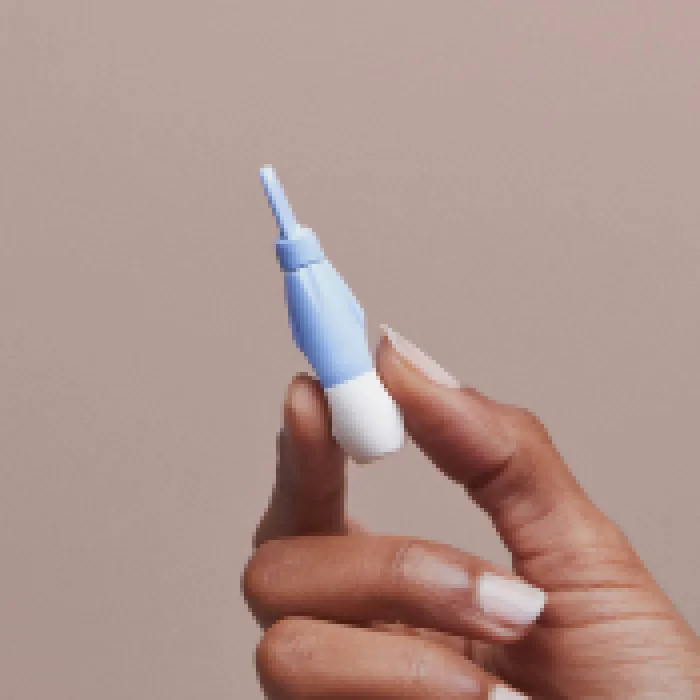How much do egg freezing and IVF actually cost?

Reviewed by Health Guide Team,
Written by Chanel Dubofsky
last updated: Jul 19, 2018
6 min read
Here's what we'll cover
A year ago, after her divorce, Kaye froze her eggs. Recently, Sadie and her partner began the in-vitro fertilization (IVF) process.
In addition to being emotionally and physically arduous, both of these procedures come with a hefty price tag, and they're not always covered by insurance. Women ask us all the time: “Should I look into a fertility treatment?” And our answer is always the same: Check in with yourself first — your hormones, your finances, your emotional state.
It's a big decision and today, with help from three women who've gone through it, we're digging into the money piece. How much do egg freezing and IVF actually cost?
Kaye's egg freezing journey
Egg freezing is a method of fertility preservation. After taking ovarian stimulating medication (AKA hormones that cause your ovaries to develop multiple eggs), the matured eggs inside your ovaries are retrieved, frozen, and stored until you choose to use them to conceive. If you decide to use them one day, the eggs are combined with sperm in a lab and implanted into your uterus through IVF — more on IVF in a bit. When Kaye, who lives in New Jersey, froze her eggs, her ultrasound, baseline blood tests, and follow up with her doctor added up to $925.
Here’s exactly how she arrived at this amount:
$200: For the ultrasound, which assesses your ovaries for anything that might be an issue (like ovarian cysts) and helps predict how many eggs might be available and robust enough for retrieval.$200: For initial blood work. This looked at Kaye’s progesterone and estrogen levels. Both of these hormones are key for regulating the menstrual cycle.$325: For additional blood work. Kaye was asked to come in on the third day of her period to accurately measure follicle stimulating hormone (FSH), which promotes the formation of eggs, and luteinizing hormone (LH), which triggers ovulation. Her anti-Mullerian hormone (AMH) levels were also measured, which determine how many eggs are left in her ovaries (AKA ovarian reserve). Understanding these hormone levels informs the treatment protocol and also helps potentially diagnose conditions like polycystic ovary syndrome (PCOS).$250: For the follow-up consultation with her doctor, after the ultrasound and tests, to discuss how to proceed given her results.
Now that we’re officially talking ca$h money, it’s important to note that this is a case study, as is the one below. All of these costs can vary greatly, which we’ll cover.
As you probably guessed, these initial appointments weren’t Kaye’s last. A single egg freezing cycle — yes, there are often multiple cycles so you can retrieve a sufficient number of eggs — is typically three weeks long. First, you have one to two weeks of taking hormonal birth control. This ensures your body’s natural hormones are turned off. Then, there are nine to 10 days of injecting yourself with synthetic hormones so your ovaries will mature multiple eggs (rather than just one, which is typical during ovulation). For Kaye, these injections were partially covered by insurance.
When the eggs are retrieved or harvested by a doctor, there's a charge for anesthesia. The retrieval is an in-office procedure that takes about 20 minutes (for the retrieval itself — the entire process, including anesthesia, can take a couple of hours). The retrieval can cost anywhere from $600 to $1500. Then, there's the matter of storing the eggs. Kaye’s storage fee is free for the first year, but $1200 for every year after.
$8,163: Total for Kaye’s first egg freezing cycle. This includes injections, anesthesia, and retrieval.$5,150: Total for Kaye’s second egg freezing cycle, including all of the above. This time, she hit her insurance deductible, so insurance (which she has through her employer, who covers egg freezing) totally covered the cost of injections.
These are some big numbers. "I used the money from my divorce to pay for it," says Kaye. "Half of our joint savings and half of our wedding gifts. I felt so guilty keeping money that people gave us to start our lives, so I used it to start my life again."
Sadie and Eliza's IVF journey
IVF is a process by which eggs, which have previously been extracted, are combined in a lab with retrieved sperm. Then, the resulting embryo is transferred to a uterus. Egg freezing can be the first stage of IVF. Meaning, if you choose to use your frozen eggs at a later date (some women end up conceiving naturally, so there’s no need to ever use their frozen eggs, you’ll go through the IVF process. This isn't the only way IVF can go down, though — you can also use freshly harvested eggs for IVF if you want to become immediately pregnant. Meaning, the eggs are retrieved, immediately fertilized in a lab with sperm, and implanted in the uterus.
Bottom line: If you choose to freeze your eggs, don’t forget about the potential costs of IVF down the road. If you’re pursuing IVF, consider the costs of egg retrieval, too, since this is a required step in the process.
OK — back to Sadie and Eliza, a lesbian couple living in the D.C. area who are experiencing the IVF process right now. Because they're a same-sex couple, their particular insurance won't cover IVF for them (though some insurance companies will do this). They're financing the entire pregnancy process themselves. There are only 15 states in the US that require insurance cover infertility costs. But here’s the thing: This doesn’t necessarily apply to all companies, like self-insured employers. The definition of “infertility” is also quite narrow. You have to be between 21 and 44, trying to get pregnant for one year via intercourse (in Sadie and Eliza’s case, you can see how this definition wouldn’t apply), or for six months if you're over 35.
Sadie and Eliza are doing what's known as “co IVF” or "reciprocal IVF.” In this procedure, Eliza underwent egg retrieval. So, like Kaye, she was given hormones to stimulate her ovaries into producing multiple eggs. Those eggs were combined with and fertilized by donor sperm. Then, Sadie received the embryo and will (hopefully) carry the pregnancy to term. Since Eliza's eggs were fertilized while they were fresh (instead of frozen) Sadie's uterine lining had to be prepped so it would be ready to house it, which is done through hormone medication.
Sadie and Eliza's fertility clinic offers a shared risk option. This means all of the costs associated with IVF are covered, if all of this doesn’t result in a live birth. That’s right: They will get 100 percent of their money back if this process doesn’t result in a baby. Sadie and Eliza qualified for this program because they met certain criteria. For this particular clinic, a physician first had to sign off on IVF being medically necessary. Second, both Eliza and Sadie had to be 40 when the IVF was completed. Some clinics also require that a woman’s AMH be a certain level for the shared risk program. Upfront, this costs Sadie and Eliza $22,500. This includes up to six egg retrieval rounds (should they need that many) and as many embryo transfers as necessary.
$3,000: Eliza’s ovarian stimulating injections.$22,500: Shared risk option IVF (includes Eliza’s egg retrieval and anesthesia, $25,500: Total cost
Sadie and Eliza are currently waiting to learn if their recent round of IVF was successful (meaning, if the embryo has actually implanted in Sadie’s uterus and pregnancy has been achieved). Because of this primary concern, they’re trying not to think about the money. "You already feel like your body has been abducted by an alien who may or may not exist," says Sadie.
Your fertility journey
First thing’s first: Don’t panic. While all of these costs seem high, there are options for financing IVF and egg freezing. Sarah, who shared her egg freezing story with us, took out a new credit card with zero percent APR for 21 months. She pays off a little bit every month and thinks of it like a loan.
Desiree, who underwent two rounds of IVF in New York City, took out a private loan. There are also companies like Compassionate Care who provide loans to uninsured folks in a certain income bracket for IVF or other infertility treatments. Like Sadie and Eliza, Desiree and her partner also qualified for a shared risk program at their clinic. The shared risk option — as Sadie and Eliza opted for — is another possibility if a clinic has a similar program and you meet the program criteria. Most clinics have financial advisors on staff who guide you through the process and help determine the best option for you.
In terms of insurance, these resources from RESOLVE (The National Infertility Association) can help you untangle the details, like insurance coverage by state and coverage through work.
There are a lot of personal factors that can impact the cost of both IVF and egg freezing — the stories above are just examples. For instance, where you live — we love this piece from FertilityIQ that breaks down average cost depending on where you live. We even called eight fertility clinics in the San Francisco Bay Area to better understand cost diversity within a single region. Across the clinics, the initial consultation ranged from $225 to $1050. The cost of blood work ranged from about $800 to $1500. However, some clinics tested fewer hormones and sent patients to a third party lab for testing, in which case the cost of blood work was lower. These are all out-of-pocket costs, so they would be lower assuming your insurance or employer covers infertility.
Other factors influence price, too. Like, how many cycles do you want or need to go through? How many eggs do you need retrieve? Research shows that your AMH levels can tell you a lot about this. We already done the homework on this topic for you.
Last but not least: While this post is focused on the financial cost of IVF and egg freezing, it’s important to call out the emotional cost of these procedures. When considering your options, make sure you have support. Taking care of yourself — not just your wallet and bills — will ensure you can emotionally withstand the journey.
DISCLAIMER
If you have any medical questions or concerns, please talk to your healthcare provider. The articles on Health Guide are underpinned by peer-reviewed research and information drawn from medical societies and governmental agencies. However, they are not a substitute for professional medical advice, diagnosis, or treatment.










